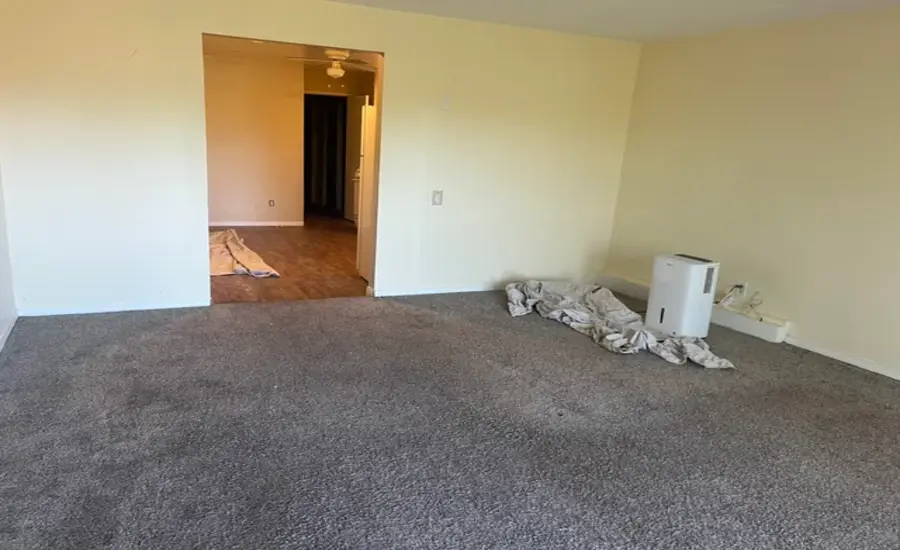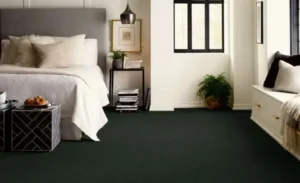Home Improvement
Why Dark Carpet is Depressing: Understanding the Psychological Effects of Dark Flooring

The choice of flooring in a space is often considered a functional decision, one dictated by practicality, durability, or aesthetics. Yet, flooring also wields a powerful influence over our emotions, perceptions, and psychological well-being. Among the many options available, dark-colored carpets hold a unique, and often controversial, position in interior design. While they may be perceived as stylish, modern, or even luxurious, dark carpets can also evoke feelings of heaviness, sadness, and confinement. This article explores why dark carpeting can be psychologically depressing, dissecting the interplay of color psychology, spatial perception, and cultural influences.
The Psychology of Color and Its Impact on Emotions
Color psychology is a well-established field of study that examines how different colors influence human emotions and behaviors. Dark colors, particularly black, deep gray, and navy, are often associated with negative or somber feelings. Unlike lighter shades, which are linked to openness, positivity, and vibrancy, dark tones tend to evoke feelings of sadness, lethargy, and introspection.
Carpets in dark colors amplify these psychological effects due to their dominance in a room. Flooring covers a substantial visual area, and its color can set the emotional tone for an entire space. A dark carpet, for instance, absorbs more light than it reflects, creating a muted, shadowy environment. This lack of brightness can dampen mood, reduce energy levels, and create an atmosphere that feels oppressive or confining.
Moreover, dark colors are often subconsciously linked with concepts of finality and negativity. Black, for example, is associated with mourning and grief in many cultures. Even darker shades of blue or brown can evoke feelings of coldness, isolation, or melancholy. When these colors are used on carpets, which are a tactile and visual component of daily life, their psychological weight becomes even more significant.
The Spatial Perception of Dark Carpeting
Beyond color psychology, the spatial perception of a room is profoundly influenced by its flooring. Dark carpets make spaces appear smaller and more enclosed. This optical illusion occurs because darker hues absorb light, reducing the perception of depth and openness. For individuals prone to claustrophobia or feelings of entrapment, such an environment can exacerbate these tendencies.
In homes or offices, where people spend extended periods, the constrictive effect of dark carpeting can lead to a sense of stagnation. A room that feels smaller and darker might unintentionally discourage social interaction or creative thinking. Over time, this can impact mental health, leading to increased feelings of loneliness or reduced productivity.
For example, consider a small living room with black carpeting. Even if the room has ample natural light, the dark flooring will absorb much of that light, creating a shadowy ambiance. This effect can dampen the overall brightness and energy of the space, leading occupants to feel less motivated and more fatigued. In contrast, a room with lighter flooring would feel airier, more spacious, and inviting, encouraging movement and interaction.

Cultural and Symbolic Associations of Dark Flooring
Cultural associations also play a role in the psychological impact of dark carpeting. In many cultures, dark colors symbolize seriousness, formality, or even danger. These associations can subconsciously influence how people feel in environments with dark flooring.
For instance, black is often the color of power and authority but also of mourning and mystery. Dark brown or charcoal shades may suggest stability but can also feel overly heavy or oppressive. These symbolic meanings affect our emotions and perceptions, even if we are not consciously aware of them. When used in a space that should evoke comfort, relaxation, or creativity, dark carpets can send conflicting signals, resulting in discomfort or unease.
In contrast, lighter colors such as beige, cream, or pastel shades are often associated with purity, calmness, and renewal. Spaces with light-colored flooring tend to feel more harmonious and balanced, offering a psychological contrast to the heaviness often brought on by dark carpets.
Practical Challenges That Amplify Psychological Effects
While the psychological impact of dark carpeting is significant, practical challenges can amplify its negative effects. Dark carpets are notorious for showing dust, lint, and pet hair, which can create a sense of disorder and messiness. This visual clutter can contribute to stress, especially for individuals who prefer tidy and organized spaces.
In addition, maintaining dark carpets often requires more frequent cleaning to keep them looking pristine. The effort and time spent cleaning can lead to frustration or feelings of being overwhelmed. For busy households or workplaces, this added burden can subtly influence the emotional atmosphere, turning a space into a source of stress rather than comfort.
Another practical issue is wear and tear. Dark carpets, particularly those in high-traffic areas, tend to show scuffs, stains, and faded spots more prominently than lighter alternatives. This visible deterioration can make a room feel neglected or run-down, contributing to a general sense of discontentment or malaise.
The Role of Lighting in Mitigating Effects
Lighting is a critical factor that can either amplify or mitigate the depressive effects of dark carpeting. Poorly lit rooms with dark flooring often feel cavernous and unwelcoming. Without adequate lighting, the shadows created by dark carpets can dominate, further enhancing feelings of gloom.
On the other hand, thoughtful lighting design can counterbalance the psychological weight of dark carpeting. Bright, natural light streaming through large windows can soften the impact of dark floors. Similarly, strategically placed artificial lighting, such as recessed lights, floor lamps, or wall sconces, can brighten a space and reduce its oppressive feel.
However, achieving this balance requires meticulous planning and often comes at an additional cost. Rooms with dark carpets may require more powerful or diverse lighting solutions, which can increase energy consumption and maintenance needs. These practical considerations add to the reasons why dark carpeting may be less desirable for those seeking a psychologically uplifting environment.
Pros and Cons of Dark Carpeting
Pros:
- Stain Resistance: Dark carpets are better at hiding minor stains compared to light ones.
- Sophistication: They can add a sense of luxury and elegance to formal spaces.
- Warmth: In some settings, dark colors can create a cozy, intimate atmosphere.
- Contrast: Dark flooring can serve as a striking contrast to light walls or furniture.
Cons:
- Psychological Weight: Tends to evoke feelings of sadness or confinement.
- Space Perception: Makes rooms appear smaller and less open.
- Maintenance: Shows dust, lint, and hair more prominently, requiring frequent cleaning.
- Lighting Needs: Demands more lighting to counteract its light-absorbing nature.
- Wear Visibility: Scuffs and fading are more apparent.
How to Balance the Effects of Dark Carpeting
For those who prefer dark carpeting despite its psychological and practical challenges, there are ways to balance its effects. Adding lighter elements to the space, such as light-colored walls, ceilings, and furniture, can create contrast and prevent the room from feeling too heavy. Incorporating mirrors and reflective surfaces can also amplify natural light, making the space feel brighter and more spacious.
Textural variety is another effective strategy. Rugs, throws, and cushions in lighter or complementary colors can break up the monotony of dark carpeting and add visual interest. Similarly, artwork and decor in uplifting colors can shift the emotional tone of a room.
Finally, incorporating natural elements, such as indoor plants or wooden furniture, can counterbalance the sterility or coldness that dark floors sometimes evoke. Plants, in particular, introduce life and freshness, helping to combat the depressive effects of heavy flooring choices.
Conclusion
The impact of dark carpeting on psychological well-being is a multifaceted issue influenced by color psychology, spatial perception, cultural symbolism, and practical considerations. While dark carpets can offer certain aesthetic and practical advantages, their potential to evoke feelings of sadness, confinement, and unease cannot be overlooked. By understanding these effects and employing strategies to mitigate them, homeowners and designers can create spaces that are both visually striking and emotionally uplifting. Ultimately, the choice of flooring should align not only with functional needs but also with the desired emotional atmosphere of a space.
-

 Fashion10 months ago
Fashion10 months agoLiteroticaTags Explained: Find And Use The Top Tags For 2025
-

 BUSINESS11 months ago
BUSINESS11 months agoWhat is NippyDrive? A Complete Guide to Using NippyDrive
-

 Biography10 months ago
Biography10 months agoCoco Lovelock Bio, Age, Career, Net Worth, Height, Education, Boyfriend & More
-

 Biography10 months ago
Biography10 months agoWho Is Meow Miu? Get to Know the Latest Star in the Spotlight
-

 Fashion10 months ago
Fashion10 months agoWebfreen.com Fashion: Redefining Affordable Luxury
-

 Home Improvement10 months ago
Home Improvement10 months agoValvula Check 32mm Sodimac: Comprehensive Guide
-

 BUSINESS8 months ago
BUSINESS8 months ago9 Packaging Trends You Can’t Afford to Ignore in 2025
-

 TECHNOLOGY8 months ago
TECHNOLOGY8 months agoTransform Text into Stunning Videos: Free Online AI Text-to-Video Generator
